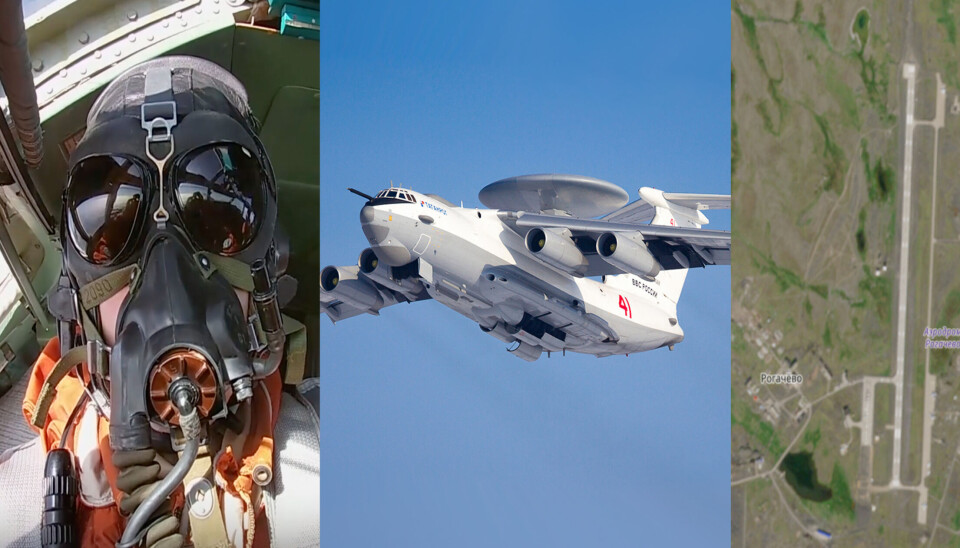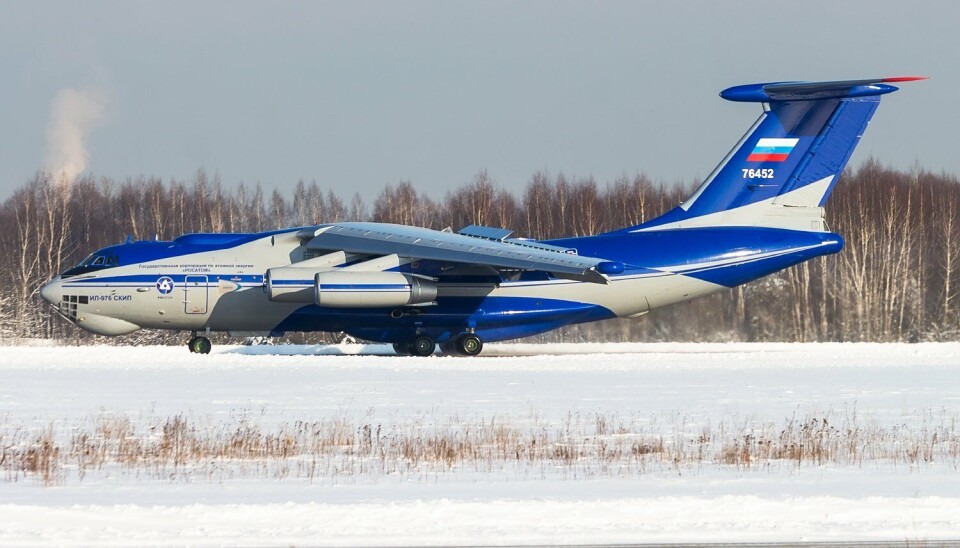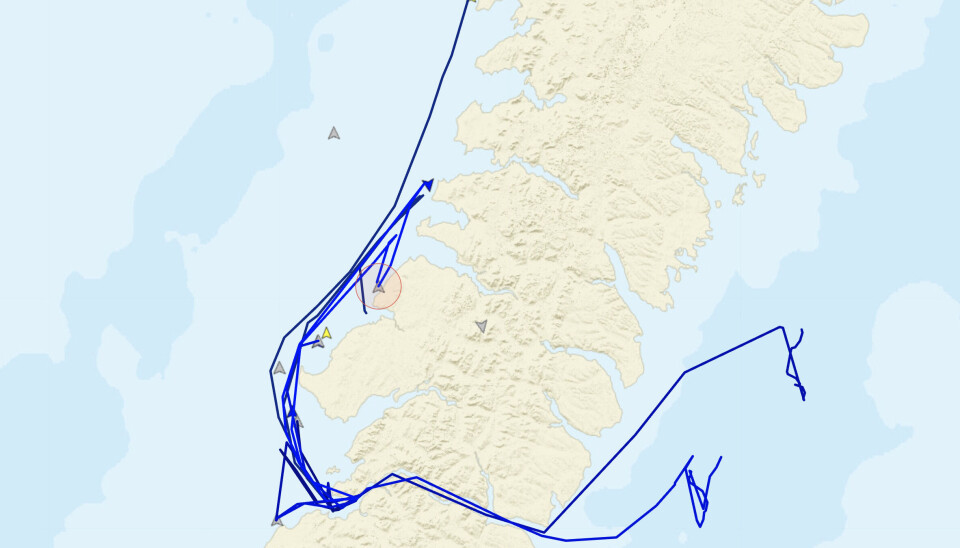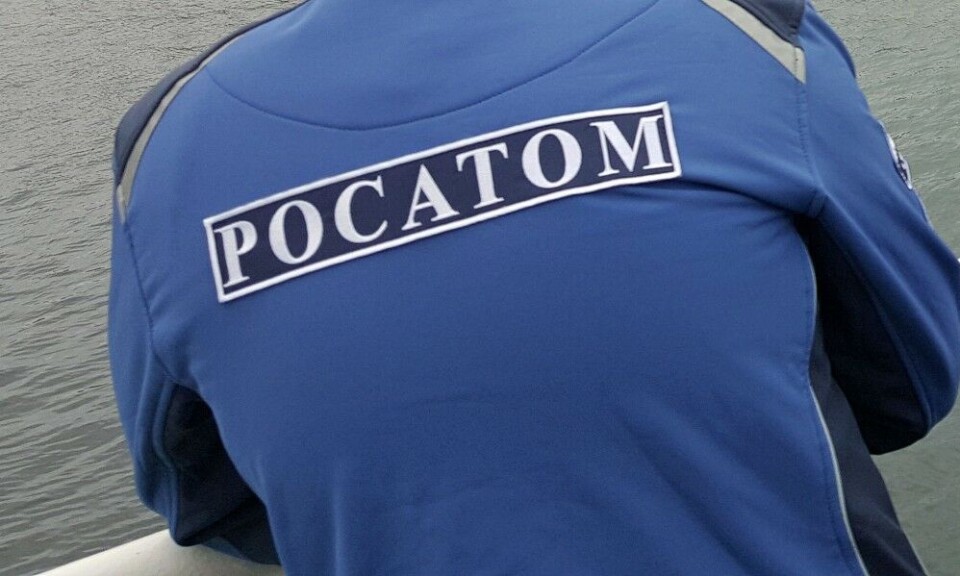
Unusual aircraft activity at Novaya Zemlya linked to Burevestnik testing
It's been a busy week at the Rogachevo air base as Russia's testing of the nuclear-powered cruise missile Burevestnik is underway. On Friday, Vladimir Putin allegedly met with the designers of the terrifying weapon and discussed the system's readiness for adoption into service.
The Barents Observer has over the first three weeks of August studied satellite images showing aircraft coming and going from Rogachevo, the military air base on the southern island of Novaya Zemlya.
Among the planes attracting interest was the arrival of a Bariev A-50U, an airborne early warning and control aircraft, that according to the Telegram channel AviVector most likely flew north from the Severny airbase near the town of Ivanovo.
This plane has rarely been seen in the Russian Arctic after the launch of the full-scale war against Ukraine.
Associate professor Lars Peder Haga with the Norwegian Air Force Academy is an expert on Russian military aviation. He says the radar plane could be in the area to monitor the flight patterns of the Burevestnik missile.
"It could be there to follow and make measurements of the missile's flight itself, but perhaps more likely to monitor and coordinate flight operations in connection with the testing," Haga says to the Barents Observer.
Additional aircraft observed at the Rogachevo air base recently include one An-72, one An-26 and one Il-76 transport plane. Two Su-35S multi-role fighters have been at the base for a while. There are currently 8 helicopters at the airport, used to transport personell and gear to both Pankovo and Severny. The latter is the settlement on the shores of the Matochkin Strait, serving the nuclear weapons test site.

Finally, Rosatom's two huge Il-976 SKIP are still at Rogachevo. The aircraft are easy to see on satellite images due to their size and blue fuselage.
Lars Peder Haga says these aircraft are specially built to monitor and take measurements in connection with the testing of nuclear missiles.
"Two of the three existing aircraft formally belong to Rosatom," he explains.
"If missile testing is to take place, we can expect there to be a lot of aircraft activity at the same time, the SKIPs will fly to monitor the flight, fighter jets may be in the air or on very high alert to meet any foreign intelligence aircraft or follow the test shot visually, and there may be helicopters ready for rescue and to collect the remains of a missile that goes into the water/ground," Haga says.
Neither any military officials, nor anyone with the state nuclear corporation Rosatom have spoken publicly about what has been going on at Novaya Zemlya over the last three weeks.
The only flight-related information from the region came last week when the war ministry reported about a mission by TU-95MS strategic bombers over the Barents Sea. One of the planes carried a Kh-101 cruise missile under its wing, the video showed, as it took off from Olenya air base on the Kola Peninsula.
A Ukrainian Telegram channel said the bombers got mid-air refuelling from a Il-76 tanker that took off from Rogachevo air base. That information, however, is not confirmed by other sources.
Closed for civilians
As previously reported, a huge area west of Novaya Zemlya is closed off for civilian air traffic with Notams (Notice to Airmen) until August 25. The coastal administration of the Russian Arctic, based in Murmansk, has likewise published warnings to seafarers for the northeastern parts of the Barents Sea.
Fishermen or LNG tankers sailing these waters should preferably stay away when a nuclear-powered missile splashes into the sea.
During the summer there has been extensive activity at Pankovo test site which holds the launch platform for the Burevestnik missile. Many of the ships the Barents Observer reported about in early August are still in the area, at strategic monitoring positions north of Pankovo.
By Sunday morning, August 24, there were nine vessels inside the closed-off area on the west coast of the archipelago. Some of them have recently sailed in from the Kara Sea via the Matochkin Strait, the narrow water separating the northern and southern island of Novaya Zemlya.

Some of the vessels bring supplies to Pankovo from Arkhangelsk. Others obviously have different reasons to be inside the closed area. Whether those vessels are solely there to monitor, or if any of them are positioned to recover a crashed missile from the seabed, is unknown.
The Barents Sea is about 100 to 200 meters deep (300 to 650 feet) along the west coast of Novaya Zemlya.
Shit happens
The Burevestnik has a poor test record.
In 2018, shortly after Vladimir Putin showed for the first time a video of the test-launch of the missile at Novaya Zemlya, the Norwegian-based environmental group Bellona suggested that mysterious radiation measured in the air up north that winter originated from the open-air-cooled reactor core of Russia's new weapon.

Later the same year, a U.S. intelligence report said that one nuclear-powered missile launched in 2017 had been lost at sea and that Russia would send a search and recover mission to try to lift the crashed missile from the seabed.
It is still unclear whether the crashed missile mentioned in the 2018 report was the one at Novaya Zemlya, or if it was the one that the year after made world-wide headlines.
Nenoksa explosion
The Barents Observer was the first foreign media to report about the explosion in the White Sea outside Nenkosa on August 8, 2019 which killed five Rosatom experts and caused a spike in radiation in the nearby city of Severodvinsk.
The explosion happened onboard a barge shortly after recovery of the reactor unit from the seabed.
Whether or not there are accidents, testing of a reactor-powered cruise missile itself will bring releases of radioactivity as the highly enriched uranium core does not have a closed cooling circuit, but uses air for cooling when flying.
"The testing carries a risk of accidents and local radioactive emissions," said Norway's Intelligence Service (NIS) in its threat assessment report published last fall. The NIS said that testing of both missiles and torpedos in Russia's near-Norway regions are expected to continue.
Invincible and unlimited range
For Vladimir Putin, a successful test of the Burevestnik missile is important.
It is seven years since the dictator bragged about Russia’s new missile in his speech to the Federal Assembly. It is “invincible” to any missile defense systems as it can navigate after launch and has an "almost unlimited" intercontinental range, he said.

"Nobody has anything like this," Putin said, simultaneously as a video-animation was displayed on big screens behind him. [You can see the video at 1:25 into the 2018 speech].
This Friday Putin flew to Sarov, the closed town in Nizhny Novgorod Oblast known as the center for nuclear research. This is the town where the five coffins with the bodies of the experts killed in the 2019 Nenoksa explosion are buried at the cemetery.
Formerly known as Arzamaz-16, the town was home to Andrei Sakharov, the nuclear physicist who developed the Soviet Union's first hydrogen bombs tested at Novaya Zemlya. Sakharov later became a well-known dissident and challenged Moscow's nuclear weapons policies.

Officially, Putin was in town to talk about Russia's glorious development of nuclear industry; icebreakers, submarines, power plants and isotopes for medicine, according to the transcript from the meeting posted by the Kremlin.
Unofficially, as noted by the Telegram Channel Deti Arbata [Children of the Arabat], Putin was in town to "receive a report on the progress of testing the Burevestnik cruise missile with a nuclear power plant and the degree of its readiness for adoption into service this year."
The newspaper Kommersant also made a point out of the fact that it took more than an hour from when Putin's plane landed at 7 pm until he appeared in the big conference hall, which is only a ten-minute drive from the airport.
The journalist discovered that Putin first went to one of the secret enterprises that was not on the schedule.
"That's where he disappeared to. He was very interested in going somewhere," the Kommersant journalist reported.



















